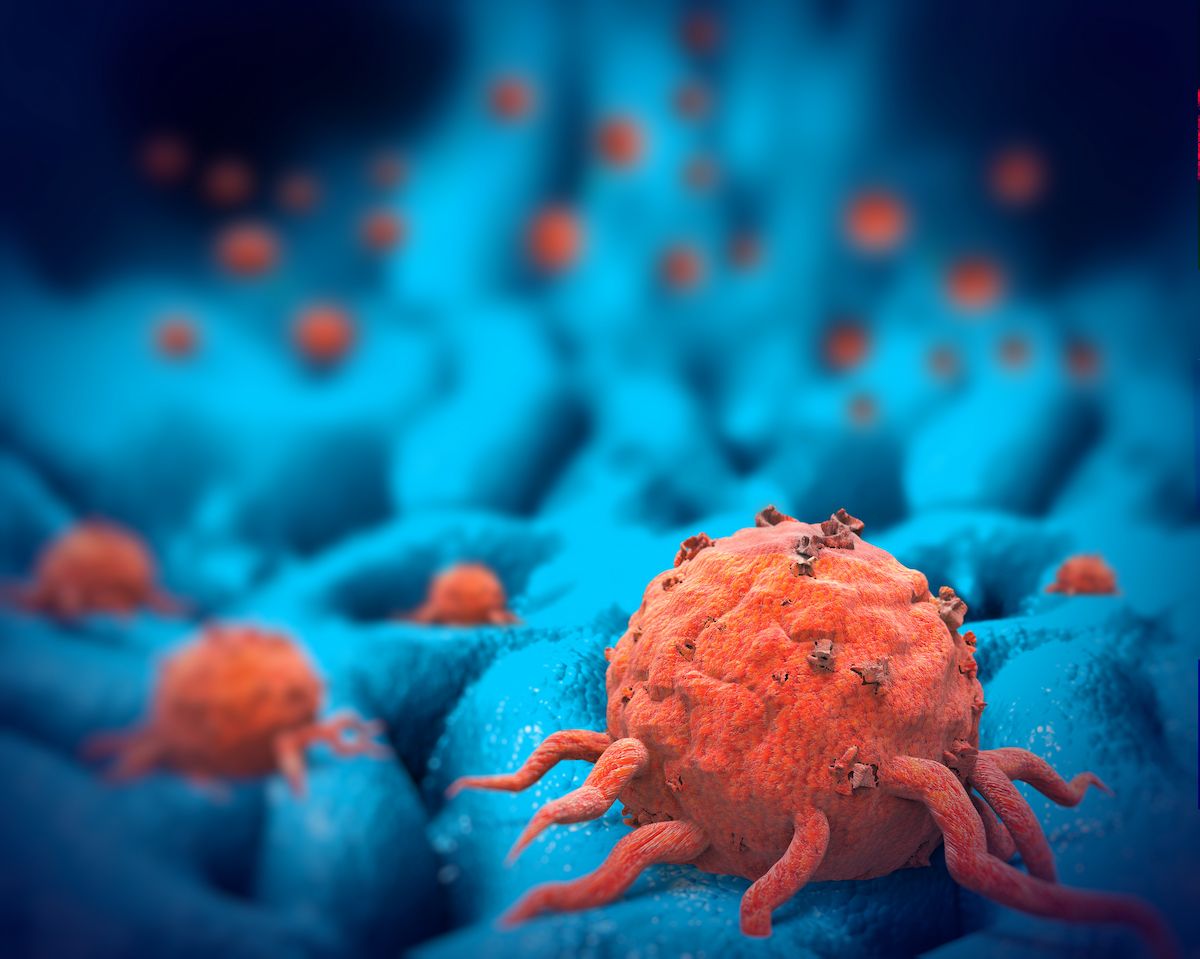Chemotherapy in RPMBS Yields Similar Survival to Osteosarcoma Population
Findings from a prospective study indicate that patients with undifferentiated pleomorphic sarcoma and leiomyosarcoma may present similarly to elderly patients with osteosarcoma.
Survival was comparable between patients with rare primary malignant bone sarcoma (RPMBS) and those with geriatric osteosarcoma who were treated with chemotherapy, according to findings from the prospective EUROpean Bone over 40 Sarcoma Study (EURO-B.O.S.S).
Investigators noted a 5-year overall survival (OS) rate of 61.1% (95% CI, 50.5%-70.1%) in the overall patient population. The corresponding rates were 62.4% (95% CI, 50.2%-72.4%) and 52.0% (95% CI, 27.8%-71.6%) for those with undifferentiated pleomorphic sarcoma (UPS) and those with leiomyosarcoma, respectively.
“RPMBS represent a [heterogenous] group of ultra-rare malignancies: namely undifferentiated pleomorphic sarcoma, leiomyosarcoma, fibrosarcoma, and angiosarcoma. While this report underscores the importance of up-front chemotherapy, it is unlikely that histology specific trials will ever be performed for relapsed disease unless a global, cooperative effort is undertaken,” Emanuela Palmerini, MD, PhD, said in an interview with CancerNetwork®.

According to the univariate analysis, investigators reported a better prognosis in terms of 5-year OS for patients with localized disease (68.4%) compared with those with metastatic disease (23.3%; P <.0001). A similar prognosis was observed in patients who achieved a surgical complete remission (68.5%) compared with those who did not (8.0%; P <.0001), as well as those with primary tumors located in an extremity (66.9%) vs those with tumors located in the pelvis (44.0%) and other axial bones (50.0%; P = .01).
The 5-year disease-free survival (DFS) rate was 55.3% (95% CI, 43.7%-65.4%) in the overall population, 56.1% (95% CI, 42.5%-67.7%) for those with UPS, and 44.0% (95% CI, 19.6%-66.1%) for those with leiomyosarcoma. In the leiomyosarcoma population, a better prognosis in terms of 5-year OS was observed for patients younger than 52 years (68.4%) vs those older than 52 years (17.1%; P = .0341) as well as those with normal alkaline phosphatase (ALP) levels (55.8%) vs those with high ALP levels (33.3%; P = .0001).
Investigators noted a significantly improved 5-year DFS prognosis for patients who achieved surgical complete remission with a good histologic response (73.3%) vs those with a poor histologic response (43.8%; P = .0340).
“The survival rate of patients [with] RPMBS in the current series was similar to that of age-matched patients [with] high-grade osteosarcoma,” lead study author Emanuela Palmerini, MD, PhD, stated in a written comment to CancerNetwork®. “It seemed much better than in previous retrospective series. Therefore, an osteosarcoma-like chemotherapy may be proposed to patients [with] RPMBS. We believe that American patients might likewise benefit from such an approach.”
Palmerini is a medical oncologist in Osteoncology, Bone and Soft Tissue Sarcomas, and Innovative Therapies at IRCCS Istituto Ortopedico Rizzoli in Bologna, Italy.
Investigators of the prospective, non-controlled EURO-B.O.S.S study assessed outcomes in 113 patients with primary metastatic or localized high-grade bone sarcoma. Patients received a chemotherapy regimen consisting of 60 mg/m2 of doxorubicin, 9 g/m2 of ifosfamide, and 90 mg/m2 of cisplatin. Patients could also receive methotrexate at 8 g/m2 if they had a poor histologic response following surgery.
Following the results of this study, Palmerini described how next steps may involve organizing research in specific sarcoma types on an international scale.
“RPMBS represent a [heterogenous] group of ultra-rare malignancies: namely undifferentiated pleomorphic sarcoma, leiomyosarcoma, fibrosarcoma, and angiosarcoma. While this report underscores the importance of up-front chemotherapy, it is unlikely that histology specific trials will ever be performed for relapsed disease unless a global, cooperative effort is undertaken,” Palmerini stated.
“The first step is to create a network of sarcoma-referral centers wordwide, to confirm diagnosis, which is relevant in this setting, and to perform prospective larger studies in order to compare outcome and different treatments for each histotype.”
Those with UPS (n = 88), leiomyosarcoma (n = 20), fibrosarcoma (n = 3), and angiosarcoma (n = 2) were eligible for inclusion in the study. The median patient age at diagnosis was 52 years (range, 40-66). Overall, 59% of patients were male. Across the overall population, most had tumors located in an extremity (73.5%), localized disease (84.1%), and ALP that wasn’t high (85.9%).
Investigators observed a treatment-related death in 1 patient due to neutropenic sepsis. Additionally, 81% of patients experienced 1 or more grade 3/4 adverse effect (AE). Common AEs related to chemotherapy in patients over 40 years of age included grade 3/4 leucopenia (80%), thrombocytopenia (62%), and anemia (55%). Neurotoxicity occurred in 23% (n = 15) of patients, including grade 1/2 events in 12 and grade 3 events in 3. Overall, 37.5% (n = 24) of patients experienced nephrotoxicity, grade 1/2 events in 21, a single grade 3 event in 1, and grade 4 events in 2.
Palmerini concluded by describing how additional preclinical research may improve the treatment of this patient population.
“Preclinical research is pivotal,” Palmerini stated. “Histology-specific preclinical models such as patient-derived xenograft might contribute to the identification of active drugs for each type of tumor. Also, collecting tissues should be a priority for such rare diseases in order to, for example, identify differences and similarities of RPMBS with their soft-tissue counterpart through whole genome and target sequencing studies.”
Reference
Palmerini E, Reichardt P, Hall KS, et al. Outcome of rare primary malignant bone sarcoma (RPMBS) treated with multimodal therapy: results from the EUROpean Bone Over 40 Sarcoma Study (EURO-B.O.S.S). Cancer. Published online August 2, 2023. doi:10.1002/cncr.34964
Sarcoma Awareness Month 2023 with Brian Van Tine, MD, PhD
August 1st 2023Brian Van Tine, MD, PhD, speaks about several agents and combination regimens that are currently under investigation in the sarcoma space, and potential next steps in research including immunotherapies and vaccine-based treatments.